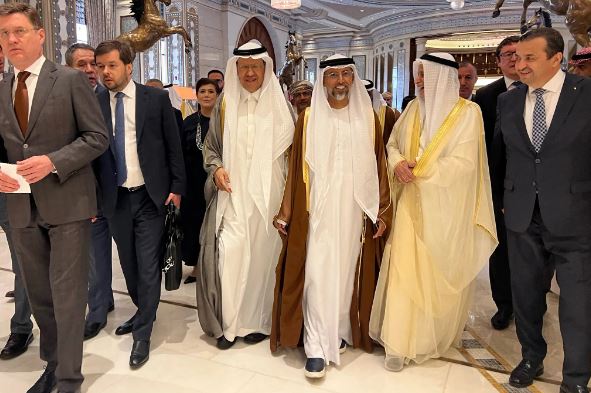Officials from major oil-producing nations convened with the challenging goal of stabilizing volatile markets by committing to continued restrictions on oil supplies. The group, known as OPEC Plus and led by Saudi Arabia along with Russia, also aimed to appease discontented producers like the United Arab Emirates (UAE) by hinting at potential increases in their oil production.
The resulting agreement, reached in Riyadh, the Saudi capital, is multifaceted and aims to sustain oil prices by maintaining deep production cuts through the next year. However, it also outlines a gradual easing of these cuts. Starting in October, oil output for eight countries, including Saudi Arabia, the UAE, and Iraq, is set to incrementally increase monthly through 2025.
For instance, Saudi Arabia’s production is projected to rise to nearly 10 million barrels per day by the end of 2025, up from the current nine million barrels. This increase remains significantly below the country’s production capacity of 12 million barrels per day.
The deal reflects the competing interests within OPEC Plus and represents a compromise that the group could realistically achieve at this juncture. Raad Alkadiri, a senior associate in energy security and climate change at the Center for Strategic and International Studies, noted,
However, not everyone is convinced that the agreement will effectively address the current oversupply of oil. Analysts from Goldman Sachs expressed surprise at the decision to announce a detailed unwind of cuts despite reports of high supply levels. Veteran oil analyst Gary Ross echoed this sentiment, suggesting that investors, already jittery about the oil market, might not find this agreement particularly reassuring.
Since late 2022, OPEC Plus has engaged in a series of output reductions to support oil prices. While producing countries have largely adhered to this market management strategy, some nations have grown frustrated with the constraints on selling a crucial commodity. The UAE and Iraq, for instance, have been producing above their agreed limits. This strategy appears to have benefited the UAE, which secured a gradual increase of 300,000 barrels per day to its official ceiling.
The UAE has been investing significantly with foreign partners, such as ConocoPhillips and TotalEnergies, to expand its oil production capabilities. The country has argued that its production ceiling does not accurately reflect its potential, and the recent agreement acknowledges this by allowing for the incremental increase.
As of Friday, Brent crude, the international benchmark, was trading at around $82 per barrel. This price is significantly lower than the peaks above $100 per barrel reached in 2022 following Russia’s invasion of Ukraine but remains high enough to yield substantial profits for major Western oil companies like Shell and Exxon Mobil. Nonetheless, oil-producing nations are eager for even higher prices to fund development projects and social programs.
In a related move, Saudi Arabia announced on Sunday that it would offer a small percentage of shares in its national oil company, Saudi Aramco, aiming to raise as much as $13 billion. This effort underscores the broader strategy to extract more revenue from the oil industry.
The complex agreement forged in Riyadh reflects the delicate balancing act OPEC Plus must perform to manage market expectations and internal pressures. As the group navigates these challenges, its ability to adapt to changing market dynamics will be crucial in maintaining stability in the global oil market.

